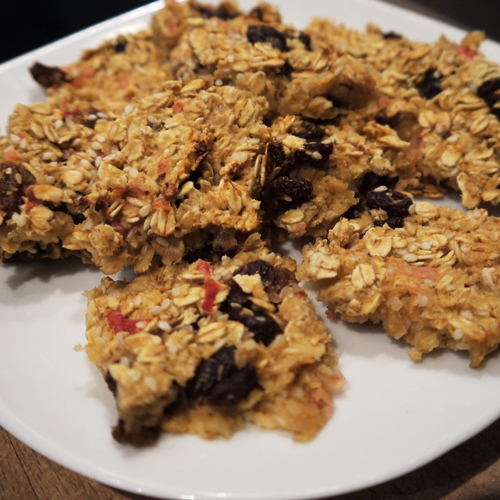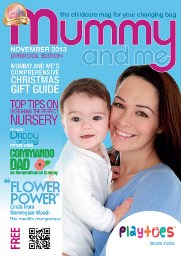Tag: 2013
Mummy and Me Magazine: Nov 2013
Alternative Advent Calendar
Christmas is almost upon us and I’m already thinking of some wonderful ideas to fill my daughter’s homemade advent calendar. This year I’ll be making a personalised advent calendar with a little treat for each day. And there won’t be any chocolate in sight.
I’ve bought some small striped paper candy bags that will be numbered 1 to 24. These will be strung up on some red wool in the style of bunting and inside each bag will be a little surprise to count down the days to Christmas.
Some ideas to include in an alternative advent calendar are recycled mini cards (cut outs of old cards we have) with a special message inside tied to some string so they can be hung on the Christmas tree as decorations and printed colouring pictures (there are plenty for free on the internet that you can print out).
Other little treats could include a bouncy ball, crayons, a mini tub of PlayDoh, hairclips, a cookie cutter, marbles, a Christmas decoration for the tree and a selection of dried fruit (which is sweet but without the refined sugar).

If you want to include some delicious natural, sweet and chewy treats in some of the days of the advent calendar my Healthy Flapjacks are simple to make. They can be kept in the fridge for up to 4 days so you can add a piece each morning before your child opens their advent calendar.
Healthy Flapjacks
Makes 15
Ingredients
- 1 large Apple
- 60 ml 100% Orange Juice
- 1 cup Whole Rolled Oats
- 1/3 cup Raisins and finely chopped Dried Apricots
- 3 teaspoons Sesame Seeds
- 1 teaspoon Cinnamon
Method
1. Heat the oven to 180 C. Line a 22cm cake tin with baking paper.
2. Wash and core the apple. Cut into thin slices and place in a pan. Add the Orange Juice and bring to the boil.
3. Reduce the heat and simmer for 20 minutes, uncovered and stirring occasionally until the apple is soft.
4. Puree the Apple and Orange juice with a hand-held mixer or in a food processor.
5. Stir in the Cinnamon, Oats, Sesame Seeds, Raisins and Dried Apricots into the Apple puree and mix well.
6. Tip the mixture into the tin and spread out evenly.
7. Bake for 20 to 25 minutes until firm and golden brown.
8. Let it cool before cutting into wedges.
Lydia Oliver, Nutritional Advisor
 This article was published in the November 2013 edition of Mummy and Me Magazine.
This article was published in the November 2013 edition of Mummy and Me Magazine.
I offer one to one nutrition programmes for breastfeeding, post pregnancy weight loss, weaning advice, weight management and health. Contact me.
Introducing Your Baby to Dairy
Nutritionally, babies need breastmilk or infant formula until they are one year old. From the age of six months full-fat cow’s milk can be used in cooking and with baby’s breakfast cereals and cow’s milk can be introduced as a main drink from the age of 12 months.

Dairy is an important part of your child’s diet providing essential nutrients such as calcium. When you start weaning your baby at around six months of age you can begin to slowly introduce a variety of foods.
Dairy can be given to baby from the age of six months in the form of cheese but avoid giving blue cheese or soft unpasteurised cheese, such as Camembert and Brie, until your baby is at least one year old. Blue cheese and unpasteurised cheese contain live bacteria which carries the risk of food poisoning.
Yoghurt is a good source of dairy for baby and can be given from the age of six months.
Allergies to Cow’s Milk
Some babies are allergic to cow’s milk so it is important when weaning your baby to introduce foods one at a time over a few days to check for any allergic reactions. You should seek urgent medical help if you think your baby is having an allergic reaction.
A food allergy is when the immune system reacts to a certain food protein resulting in a physical reaction which can occur immediately or within three days.
If your child has cow’s milk allergy the symptoms will start when cow’s milk is introduced into their diet. Symptoms of cow’s milk allergy could result in diarrhoea, vomiting, skin rashes, stomach cramps and difficulty breathing. In rare cases cow’s milk allergy can cause anaphylaxis.
Cow’s milk allergy is a common food allergy in children and most children who have this allergy grow out of it by the age of three, although it is estimated that 20 per cent of adults will continue to have cow’s milk allergy.
Alternatives
Aside from cow’s milk products there are many food sources that contain high levels of calcium. So if your child does have an allergy to dairy products you can still make sure your child’s diet is rich in calcium. Some good sources of calcium rich foods include sesame seeds, sardines canned in oil, spring greens, tofu, watercress and kale.
 Lydia Oliver – Nutritional Advisor Only Best For Baby
Lydia Oliver – Nutritional Advisor Only Best For Baby
This article was published in the September 2013 edition of Mummy and Me Magazine.
I offer one to one nutrition programmes for breastfeeding, post pregnancy weight loss, weaning, weight management and health. Contact me.
Explore, Educate and Eat
Food education is at the forefront of most parents’ minds and is fast becoming a core subject on the school curriculum. I am not surprised there is so much focus on teaching nutrition to children from a young age. Children who learn about food and nutrition are more likely to make healthy food choices and eat fruit and vegetables.
The best and most simple way to get your children thinking about food and nutrition is to get them involved. Here are some simple, daily activities you can do with your children to expand their knowledge about food and make learning fun.
Start with fruit and vegetables
Buy a selection of both and play simple question and answer games that your children will find interesting and educational. What is it? How is it grown? Where does it come from? Could you grow it in your garden or on an allotment?

Experiment
During the week sit down and eat each fruit and vegetable with your children. Talk about whether you can eat it fresh or if it needs to be cooked first. What does it taste like? What colour is it? Ask your children to come up with as many meal ideas as they can that include this fruit or vegetable.
Go green
An easy and engaging project is to try growing fruit, vegetables and herbs with your children. Even if you’re not green fingered, give it a go! All children love to be outside and will learn from the experience of growing something they can eat, plus you could save money growing your own.
Visit a Farmer’s Market
Have a family day out and let your children discover where food comes from and how it is grown. Talk to the growers about their produce and sample the fresh food on offer.
Create
Involve your children in the preparation of their lunch box using fresh ingredients. Cook simple meals and get your children to help where they can, even if they’re simply watching you and talking about what you’re doing. Sit down as a family and enjoy your home cooked food together.
Explore nutrition
Teach your children about the importance of nutrition for a healthy mind and body. Explain why fresh is best.
If you follow these simple steps your children will soon start to take a keen interest in fresh foods and helping you to prepare and cook meals. Regular interaction with food as part of your everyday home life will encourage children to make the right choices for their health.
 Lydia Oliver – Nutritional Advisor Only Best For Baby
Lydia Oliver – Nutritional Advisor Only Best For Baby
This article was published in the August 2013 edition of Mummy and Me Magazine.
I offer one to one nutrition programmes for breastfeeding, post pregnancy weight loss, weaning, weight management and health. Contact me.




